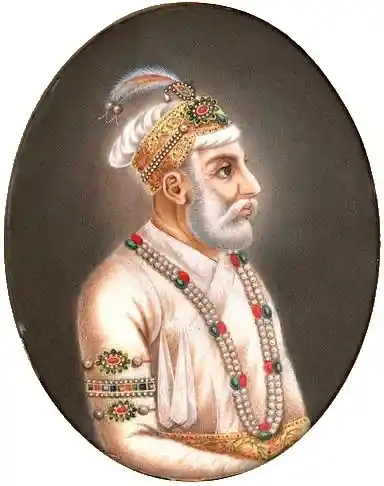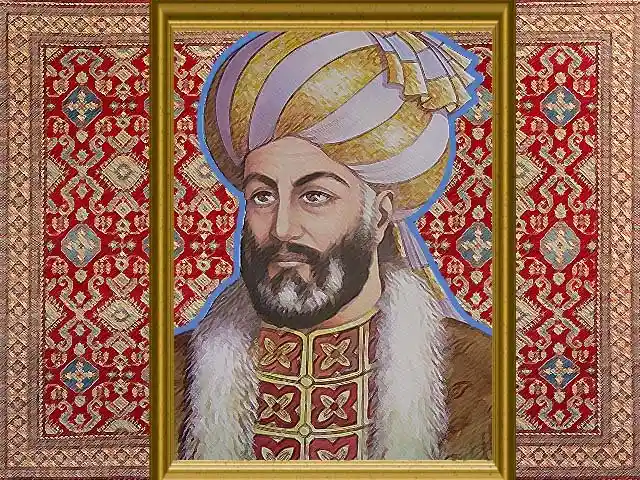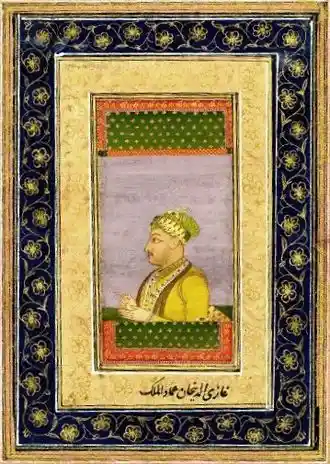The King Who Failed The Mughals
Wearing his fancy turban, he not only lived but ruled. Though power combined with destiny made him a king, the arrogance vested in him was because of his expensive robes and royal throne. Little did he know that his rule would reduce the kingdom to ruins.

A weak-hearted ruler or a misinterpreted one?; Image Source: Wikimedia Commons
From the beginning of the 1500s till the beginning of the 1700s, the Mughal Empire controlled almost the entire Indian subcontinent. Stretching from the edges of the Indus River basin, northern Afghanistan and Kashmir in the northwest to the Assam and Bangladesh highlands in the east, and down to the uplands of Deccan plateau in the south.
The Mughal Empire has witnessed several generations of powerful rulers, since time immemorial. Starting from the reign of Babur, the Mughal Empire passed through the hands of several powerful personalities like Humayun, Akbar, Jahangir, Shah Jahan, Aurangzeb, and finally came to an end at the hands of Bahadur Shah. With their political, military, artistic, and intellectual prowess, they changed the face of India.
The lands of Burhanpur saw the rise of Maaz-ud-Din, the son of future Emperor Bahadur Shah I. However, the real started with the birth of Alamgir, the second son of Maaz-ud-Din. When Alamgir was seven, his grandfather Bahadur Shah I died and then followed the War of Succession, in which Maaz-ud-Din was defeated at the hands of Farrukhsiyar. Soon after this war, Aziz-ud-Din was imprisoned in 1714 and was released after thirty-four years. Immediately after his release, he was made the king by usurping Vizier Imad-ud-Mulk. Imad was of the view that a 55-year-old ruler was frail and would not object to his rule. It was finally on 2 June 1754 that Aziz-ud-Din was not only given the title Alamgir, but also the royal throne. Wanting to replicate the centralised ruling approach of Aurangzeb, Alamgir could not identify the evil intentions of Imad.
Seeing Durrani’s support, Alamgir extended the hands of friendship towards him and this friendship transformed into a family relationship when Timur was married off to Alam’s daughter, Zuhra Begum.
It was the year 1757 when the infamous Siege of Delhi took place. The blazing fire of enmity between the Marathas and the Mughals destroyed the city of Delhi. Imad assisted the Marathas in plundering Delhi as the Maratha army led by Raghunathrao rejected the alliance offered by the Durrani Empire. The angry Marathas started the fight against Alam’s Mir Bakshi who was in the hope of getting help from Ahmad, who was himself busy in suppressing the rebellions near Herat. Upon not receiving any help, the Mir Bakshi finally surrendered and left for Najibabad.
When the Marathas made their entry into Delhi, Alamgir had already fled away with his family to Bharatpur. The city was looted and plundered, and mosques and shrines built by the Mughals were destroyed. Imad was appointed as the Mir Bakshi with the support of the Marathas. When all the chaos finally came to an end, Alamgir returned to Delhi and sympathised with the death of Nawabs of Kurnool, Cuddapah, and Savanur.
The most reputed Nawab of Bengal, Alivardi Khan’s death was a huge shock for Alamgir as Khan pledged 5 million dams annually to the court. Later on, Siraj-ud-Daula was made the Nawab of Bengal, but people did not consider him as the Nawab. Irritated by their attitudes, Siraj hastily decided of annexing Calcutta from the Britisher without the prior permission of Alamgir. However, the war did not go as planned. Siraj and his forces were pushed into the death hole by the treacherous Mir Jafar. Gauging Jafar’s evil intentions, Alamgir did not appoint him as the next Nawab of Bengal. This decision brewed feelings of animosity in heart of Mir against Alam and he joined hands with Imad to kill the entire imperial family.
Their plans worked when in the winter of 1759, Imad and some other people from different ethnic groups, murdered the Mughal Emperor Alamgir and his other prominent family members. Alamgir’s death was no less than a well-planned murder that was executed with perfection.
When Aziz came to power, the Mughal Empire began to re-centralise. Several Nawabs gained the confidence of the Emperor and wanted to fight against the Marathas. But Imad had other plans as he wanted to retain his authoritarian rule and get the undaunted support of the Marathas.
The relationship between Imad and Aziz got so bitter that Imad acquired all the imperial revenues and did not give a single penny to Aziz’s family. Imad also persecuted Alam’s eldest son Ali Gauhar.
In the year 1755, when Muin-ul-Mulk, the Mughal Viceroy of Punjab, lost his life, his widow sought the help of Ahmad Shah Durrani to protect Punjab from getting annexed. Thinking thoroughly about this situation, Ahmad employed his son Timur as the new viceroy of Lahore, under the protection of commander Jahan Khan, and Adina Beg was appointed as the Faujdar of Doab. In October 1957, Alamgir marched with his other nobles and army men to meet Ahmad, whose army was engaged in fighting against the Maratha forces and was constantly threatening to overthrow the rule of Imad-ul-Mulk.

Ahmad Shah Durani: A bone of contention or tension?; Image Source: The Express Tribune

Imad-ul-Mulk: The real conspirator behind the downfall of Mughal Empire; Image Source: Wikipedia


